Tomato strick: description of the disease and methods of struggle
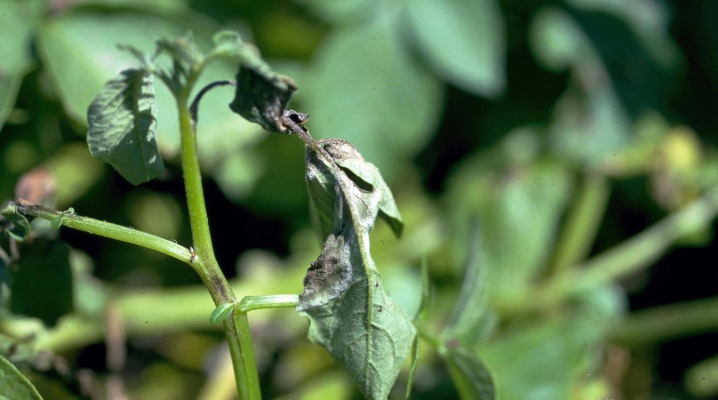
Tomato is a plant from the nightshade family, which can be called the garden king among vegetable crops. It amazes with its various characteristics in terms of height, ripening times, colors, fruit shapes, and application. But, like all plants, the tomato is prone to a huge number of diseases that you need to know by sight, be able to prevent and treat them. One of the insidious tomato diseases is the streak.
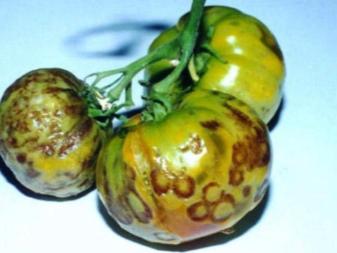
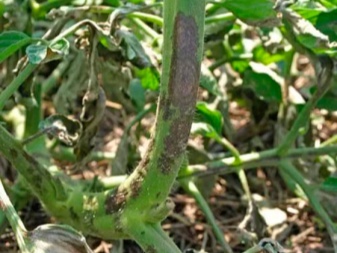
What it is?
The tomato is susceptible to many viral diseases, one of which is called streak or streaky spotting, streaking. This tomato disease is one of the many varieties of mosaic, its virus penetrates and destroys the plant at the cellular level from the inside. The causative agent is the tobacco mosaic virus, which can interact in company with the potato X or Y virus, cucumber mosaic. A single effect of the virus on a plant forms a simple streak, while a joint effect is complex, but rare.
In infected plants, the incubation period for the development of the disease is up to two weeks before the first visible signs appear. In most cases, the disease progresses in the fall. Streak affects tomatoes grown outdoors, in greenhouses and greenhouses. It inhibits the growth of plant fruits, reduces their taste. The affected fruits are not suitable for eating, you cannot get good seeds from them - they are infected with a virus.
One of the diseases of tomatoes, visually similar to streak, is bacterial pith necrosis. It is caused by bacteria that infect the entire plant and lead to its wilting. Necrosis spreads in greenhouse conditions, open field plants do not get sick.

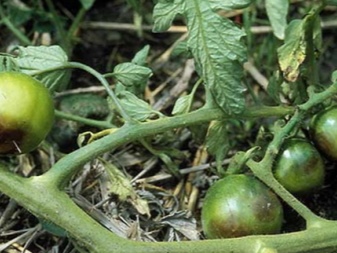
Description of signs of occurrence
For a successful fight against the disease, it is important to know the main characteristic symptoms and signs of streaky spotting. It is indicated by:
- dark or brownish-red strokes of petioles, stems, peduncles;
- dark spots of irregular shape on the leaves;
- curliness of new growing leaves;
- drying of the tops;
- fragility and fragility of plant parts affected by the disease;
- falling off flowers and ovaries;
- weak ovary formation;
- stopping the growth of the formed fruits;
- the appearance of shiny brown-brown spots of an angular shape on green tomatoes;
- cracking and hardening of individual parts of the fruit;
- yellow-brown striping on ripening tomatoes;
- irregular shape of the fruit;
- decay directly on the plant;
- brown areas when cutting.
The external manifestations of the streak are in many ways similar to late blight or brown rot, but they are separated by one significant difference - the leaves. If they are weeping, with a grayish-brown bloom, the plant is affected by late blight, and dryness, lack of juice, brown-brown color of the tops indicate a streak.
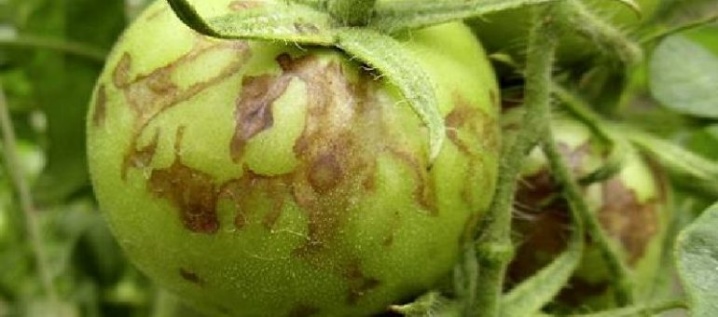
Causes of the disease
A streak that infects tomatoes can leave the grower without a crop or halve it. It is possible to prevent the appearance and development of the disease only by knowing the causes of its occurrence. As the saying goes, he who is forewarned is armed.
The cause of the disease is the appearance of the causative agent of the virus in the area, which helps to spread some conditions:
- low temperature conditions;
- high air humidity;
- insufficient illumination;
- excess content of nitrogen and phosphorus fertilizers.
The carrier of the infection can be:
- a person performing pinching, pinching when caring for tomato bushes;
- insects - aphids, thrips, ticks, leafhoppers;
- diseased plant.

How to deal with it?
Getting rid of the virus is difficult. It will take a lot of strength and patience to eradicate the spread of a pathogenic organism. To combat the disease, vegetable growers use several methods: preventive measures, treatment with chemical and folk remedies.
Preventive measures to combat streak include the following set of measures:
- disinfection of open and greenhouse soil;
- proper cultivation of tomato seedlings;
- timely detection of diseased plants at the initial stage;
- heal and eradicate damaged tomatoes.
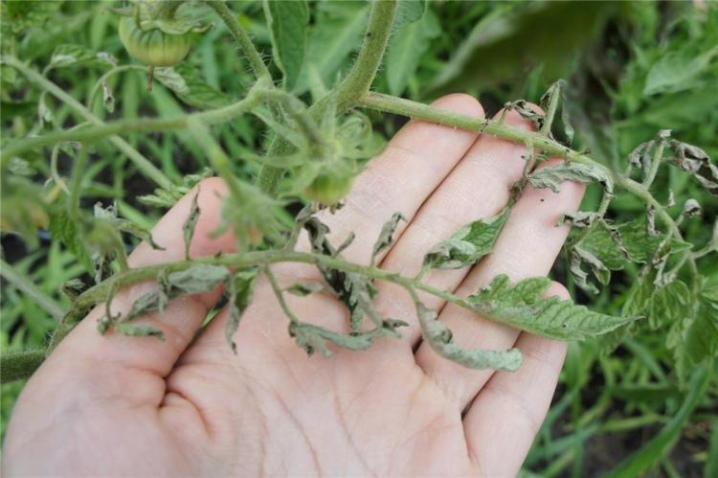
An indisputable method that reduces the risk of streak occurrence is soil disinfection. A plot of land or a greenhouse where tomatoes with signs of tobacco mosaic grew are the first source of infection with the virus. The causative agent of the disease is perfectly preserved in the soil layers for several years. To restrict it from falling into the ground, you must follow the rules.
After completing the harvest, immediately remove plant residues.
In the greenhouse:
- treat all surfaces with a 5% solution of potassium permanganate;
- steam the soil, maintaining a high temperature regime;
- spray with biological soil fungicides, for example, glyocladin;
- replace the top soil layer.
In the open field, carry out pre-sowing treatment of the site, plants and holes with a solution of potassium permanganate.
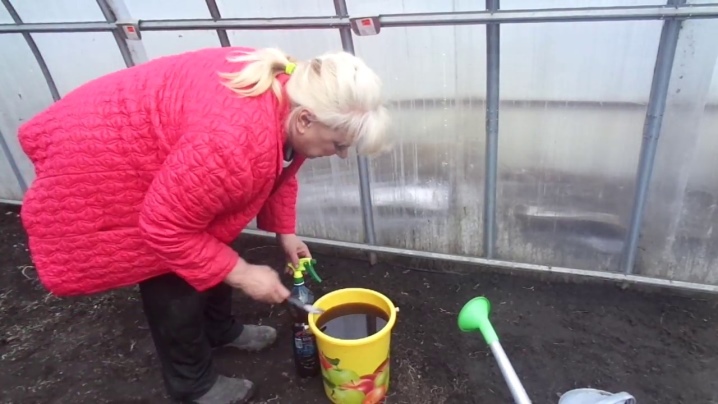
The age-old wisdom of our ancestors says: "You reap what you sow." Mandatory prophylactic agents in the fight against streak are:
- using healthy seed;
- processing and disinfection of seedling boxes;
- growing tomato seedlings in good light;
- special irrigation regime for seedlings.
For the future harvest, the quality of the seeds is important - you cannot use seeds collected from diseased plants. Virus activity is lost 6 months after harvesting the material. The best option is to use seeds for sowing in 2-3 years. Before planting, any seeds must go through the "pickling" procedure with a solution of potassium permanganate or nitrate (1%). When watering seedlings and before planting, use a weak (0.005%) solution of potassium permanganate. In order for plants planted in open ground and a greenhouse to have sufficient illumination, it is important to choose the right place for the future garden.


A viral disease can be eradicated by observing the rules of planting, growing, processing tomatoes.
- You cannot plant tomatoes in the same place for several years, it is important to apply the rules of crop rotation.
- There should be enough space between the plants to receive light and air.
- When carrying out pinching, it is necessary to treat the working tool with a strong solution of potassium permanganate. Pruning is carried out selectively in dry weather, starting with healthy plants.
- Mature, fruiting tomatoes can be pruned in the lower deciduous tiers, which interfere with air ventilation.
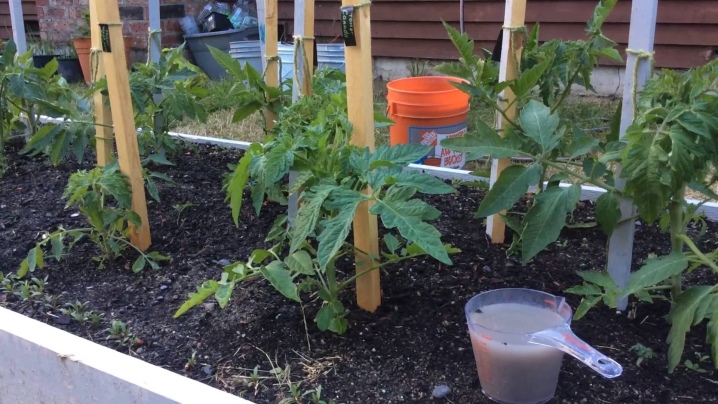
At the first early signs of the appearance of streaky spotting, the plants can still be saved. It is impossible to cure tomato bushes from the disease, but you need to protect against further penetration and reproduction of the virus by turning to chemical or folk remedies:
- treatment of healthy and diseased plants with solutions of insecticides that cause the death of harmful insect vectors, and fungicides that suppress the development of pathogens, prevents the spread of viral infection;
- treatment with a composition of milk (1 l) and iodine (10 drops) per 10 liters of water;
- treatment with salted water before cooling (3 tablespoons of salt per 10 liters of water);
- the conservative and most reliable method is to remove and burn diseased tomato bushes.
With insects, which are carriers of the disease, you need to fight and you can use folk remedies. Garlic, Dalmatian chamomile have proven themselves in the fight against live carriers of infectious and viral diseases of tomatoes.

For more detailed information on the symptoms and methods of dealing with a tomato streak, see the next video.













The comment was sent successfully.